
12 minute read
A Model Philanthropist
By Menachem Wecker
Editor’s Note: UMGC alumnus John Milton made a most unusual gift to the university Arts Program this year: ruby and emerald jewelry. The gift was not his first donation to his alma mater. In the following interview, Milton talks about his life and especially about his wife, for whom he first bought this jewelry.
Advertisement
JOHN “JACK” MILTON and I are sitting in the living room of his home in the Washington, D.C., area amid a glorious array of Chinese vases, screens, paintings, and other Asian art. Milton, a former U.S. Air Force colonel and Merrill Lynch executive, reflects on his late wife, Symantha, who went by Sammie.
“She was the most beautiful person I’ve ever seen,” he says. “When she died at age 99, she still didn’t have a wrinkle on her face.”
Milton, 96, met Sammie on his way home to Bowling Green, Kentucky, for Thanksgiving in 1947. He was a test pilot assigned to Wright-Patterson Air Force Base near Dayton, Ohio, and he passed through Louisville en route to Bowling Green. Sammie was visiting her family in Louisville, and the two attended a party hosted by a mutual friend. They started dating from afar—she modeled in Cincinnati—and although Dayton was only some 55 miles away, there were no interstates in those days.
After two-and-a-half years of dating, the two married in May 1950. A year later, Milton was transferred to Fairbanks, Alaska, to run cold-weather tests on aircraft equipment. The Miltons lived there in extreme cold for three years. “It’d go to 50 below zero and stay that way for two or three weeks, and then warm up to maybe 30 below for a week or two,” he says. “Then it would go back down. It was total darkness for the month of December, and of course in June and July, it was total sunlight.”
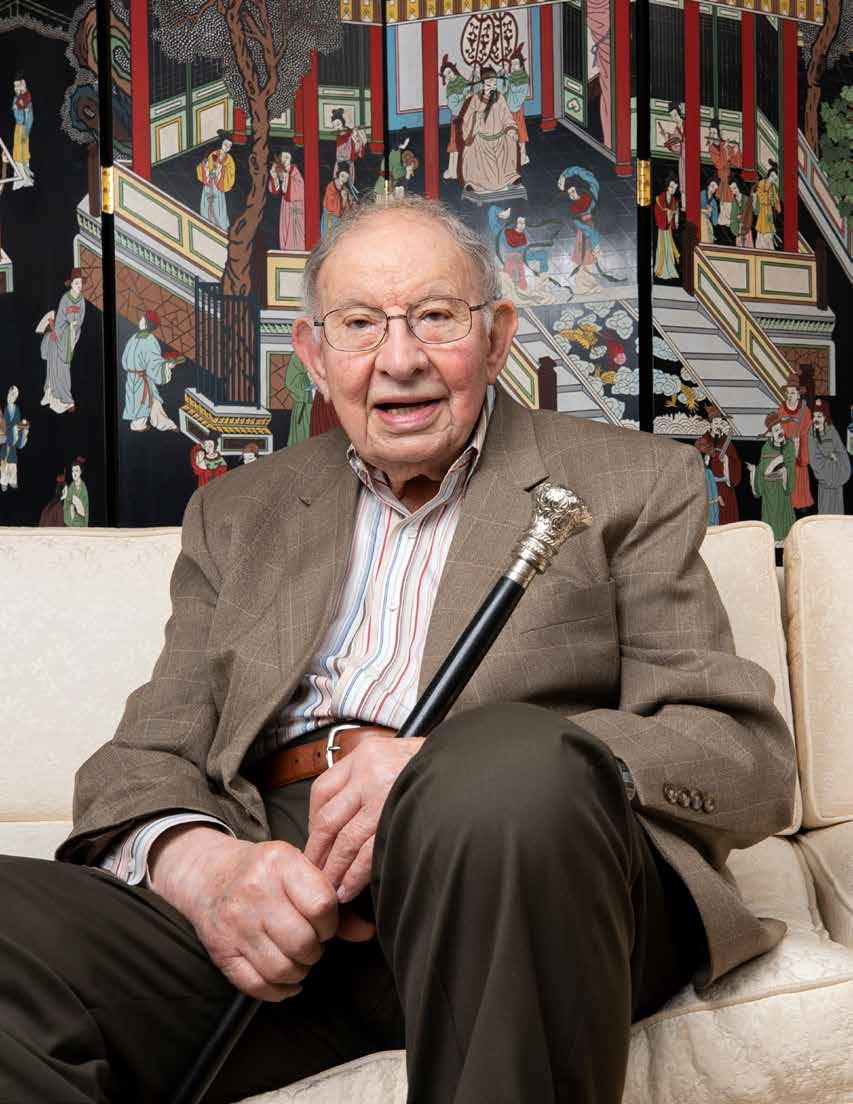
UMGC alumnus and veteran John Milton in his home in Arlington, Virginia
“As in every place we ever lived, Sammie made the best of everything,” he added. In Fairbanks, she became fond of fishing. Milton remembers that Sammie caught a record trout, a 30-inch fish that weighed 25 pounds, in Paxson Lake, which earned her a spot on the front page of the Fairbanks newspaper. “She loved to fish,” he says.
Sammie also enjoyed playing golf and bridge, which became a social staple for her as she and Milton moved all over the world, including the Congo and Taiwan. In their Washington, D.C., area home, where the two lived for the final decades of Sammie’s life, she belonged to three bridge clubs. Milton played as well. Sammie embraced her husband’s interests, too, just like he took up bridge. “It seemed like whatever one liked, the other would also learn to like and participate in,” he says.
In Fairbanks, Sammie befriended a woman who ran a women’s ready-to-wear store. The latter was so taken with Sammie that she opened a special, high-end dress shop for Sammie to manage. “From her modeling days, Sammie knew most of the dresses and designers, and she was able to get a great collection of clothing for the store,” Milton says. “There was a lot of money in Fairbanks, and during the long winter months, there was a lot of entertaining and a lot of parties, so it was a very popular store,” Milton says.
The friends they made in Alaska were for life, Milton says. “Sammie was the outgoing person, and she made the friends. Everybody liked her. I don’t know anybody who didn’t like her.”
After the three years in Alaska, Milton transferred to Sacramento to the since-shuttered McClellan Air Force Base. There, he was one of the first pilots assigned to a new airborne early warning and controlling station being formed. He flew reconnaissance missions over the ocean in planes equipped with airborne radar to detect enemy submarines, bombers, or other ships.
“That was right at the height of the Cold War with Russia,” Milton says.
The Miltons stayed in California for six years, during which Sammie worked for the local utility, Pacific Gas and Electric (PG&E), recruiting and training models to demonstrate stoves and fridges in homes being shown.
CALM UNDER PRESSURE
When I ask Milton if Sammie ever worried about his potentially dangerous reconnaissance missions, he shakes his head, waving off the question. Sammie had complete confidence in him, he says, even when he crash-landed in the winter in the Fairbanks bush. “They didn’t find me for a week. They practically gave up on me,” he says. “My commander and his wife visited Sammie with what they thought was bad news.” Sammie told them not to worry about it and that her husband would return.
“A couple of days later, I was back,” Milton says. “She was that way. She didn’t worry about it.”
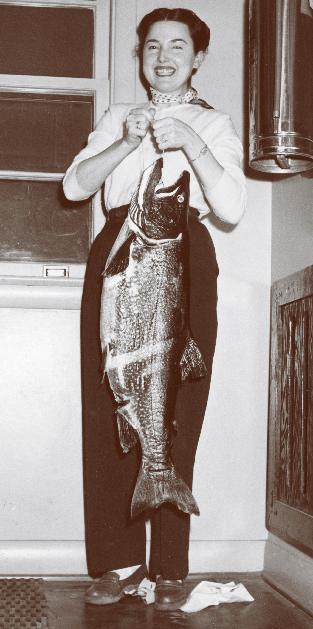
Sammie displaying her record trout catch in Fairbanks, Alaska
—JOHN MILTON
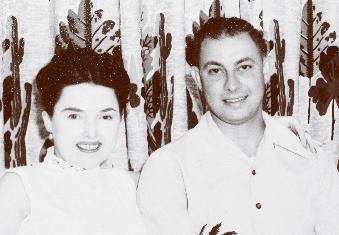
The couple shortly after their marriage in 1950

Sammie (far right) as a Gray Lady volunteer nurse at McClellan Air Force Base in Sacramento, California
From Sacramento, the Miltons moved to Washington, D.C., where he went into an air attaché training program. From there, he was assigned to the U.S. embassy in the former Belgian Congo from 1963 to 1965, right after Congo became independent and during repeated uprisings.
“During that time, Sammie again was very active in our embassy assignment, even though there was a war going on,” he says. “We entertained a lot. She was extremely good at that sort of thing, so we were very successful.” Cocktail and dinner parties are very important to embassy life, Milton adds, because that’s when diplomats meet and exchange information.
“If you were invited to dinner at our house, you knew you were going to get a good, elegant meal; elegant surroundings; and so forth,” he says.
The Congo assignment was also a dangerous one. “The insurgents were right in the city, and you didn’t know who was and who wasn’t a friend,” he says. Milton had told the night watchman that if there was impending danger, he should blow on the police whistle to alert Milton and then flee for his life. “I told him, ‘I don’t want you to fight and die for us,’” he says.
Milton was out in the field a lot. He had taught Sammie how to shoot a submachine gun, and she kept the weapon on a nightstand near her bed when the house was locked at night. “I felt pretty confident that she’d be able to defend herself,” he says. As a natural athlete, Sammie had learned how to use the gun intuitively.
At one point, Sammie was nearly kidnapped. Although Milton had assigned her a driver, she sometimes drove on her own. One time when she went driving to see a friend, she encountered a roadblock. “One of the soldiers got in the back of the car and told her to drive on,” Milton says. “She wouldn’t do it.” Luckily, a United Nations officer drove by, saw that there was a problem, and got the guy out of the car. “She turned around and went home then,” Milton says. “But she could handle a situation like that.”
Next, the Miltons returned to Washington, D.C., where he was assigned to Air Force operations in the Pentagon. At the time, University of Maryland Global Campus (UMGC), then called University College, a division of the University of Maryland, offered night classes at the Pentagon.
THE UMGC CONNECTION
“I had been called to active duty in World War II, the end of my sophomore year, and I never had a chance to complete my bachelor’s degree,” Milton says of his studies at Western Kentucky University. “I took advantage of that University of Maryland program at the Pentagon.” He took classes three nights a week during the school year and four nights a month over the summers. “In two-and-a-half years, I got two years of credits and got my degree. That’s how I got involved with the University of Maryland,” he says.
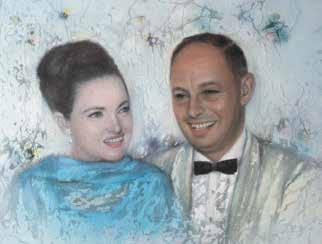
The couple while stationed in Taipei, Taiwan, c. 1970
“At 6 p.m., the conference rooms in the Pentagon would turn into classrooms,” Milton remembers. “I’d work until 5:45 and then go to class for two-and-a-half hours, and then go back to work some more. That was very difficult for Sammie, that I was gone so much of the time. But she was very supportive of everything and became well known in University of Maryland circles, as well as other social circles in Washington.”
The Miltons would go on to become significant supporters of the university in the following years. Milton was a charter member of the University of Maryland Foundation and was instrumental in issuing the university's first bonds through Merrill Lynch; he organized the President’s Club for UMGC; he was part of the advisory committee to USM chancellor John S. Toll; and he was a member of the Board of Visitors both for the USM and UMGC.
The Miltons also contributed $440,000 toward the John L. and Symantha Milton Scholarship Fund and redirected the funds toward the Pillars of Strength Scholarship Program, which helps caregivers of wounded servicemembers. Throughout her life, Sammie volunteered in hospitals and supported a variety of charities.
“I was so appreciative of the program they had going in the Pentagon,” Milton says. “Sammie appreciated that too. We both were interested in education. Her education was interrupted too. She became a model and didn’t go back and finish up” at the University of Kentucky, Milton says. “But she had a great appreciation of education and what it could do.”
On Milton’s graduation day from University of Maryland, he and Sammie were on their way overseas again—this time to southeast Asia. “I was assigned to a flying division that was remoted to Taiwan but operated in Vietnam,” Milton says. Again, Sammie made quick and close friends, including strategic ones in the government that helped her husband’s and his colleagues’ efforts.
The Miltons had been interested in Asian art since they had furnished their first home, but this period in their life amplified that interest. The first piece of artwork they bought after their marriage was an Asian painting that Sammie in particular was drawn to. “For the rest of our lives, we collected Asian art wherever we happened to be and wherever it was available,” Milton says.
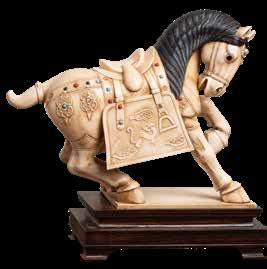
Chinese ivory horse bought by John and Sammie in Hong Kong in 1969
—JOHN MILTON

One of the couple's first artwork purchases, a Japanese landscape painting, signed Chien
The two lived in Taiwan from 1968 to 1970. They then moved to Boston, where Milton got a master’s degree in communications from Boston University. The next year they returned to Washington, D.C., and Milton went back to the Pentagon for the third time. When he retired from the Pentagon in 1974, the Vietnam War was still underway, and there was significant animosity in the nation toward the military.
In the first day of a course for returning servicemembers that Milton took at American University, he was told that he should deny the fact that he had worked in the military if he sought work outside the defense industries. “After 31 years and four wars, I found that pretty hard to take,” he says.
PLANTING ROOTS IN WASHINGTON, D.C.
A promising new job opportunity arose, but it would have required moving to Africa. “Sammie and I talked it over, and we decided that we’d lived out of a suitcase for 31 years and didn’t want to do that again,” Milton says. As he was leaving the final interview, during which he turned down the job, he saw a job fair. Entering, he saw the longest line was in front of the Merrill Lynch booth.
The manager of Merrill Lynch’s Washington, D.C., branch asked Milton a couple of questions and liked what he heard, so he invited Milton to interview further in his office. There, he offered Milton a job, which Milton accepted. “It was the best thing that ever happened to me,” Milton says. He worked for Merrill Lynch for 28 years, on top of his 31 years in the Air Force.
As usual, Sammie was very supportive and quickly found an appropriate social circle. “This helped a lot,” Milton says. He retired in 2003, having been a first vice president.
In 2005, Sammie had a massive hemorrhagic stroke, and the doctors gave her a month to live. Despite that prognosis, she lived another 15 years. She died on March 10, 2016.
A MODEL GIFT
During her modeling career, Sammie modeled jewelry and became fond of it. “She liked it, and I liked to buy it for her,” Milton says. “Over the years, we collected jewelry too, and I’m giving one ruby set and one emerald set to UMGC.”
The rubies, which are Burmese, are a kind of stone that hasn’t been available for purchase for a long time, and top-quality Burmese rubies can be more valuable than diamonds, according to Milton. The Colombian emeralds are also highly valued, he says.
“We are fond of those particular ones, because Sammie never had a chance to wear them. I bought them for her after she had the stroke to cheer her up, which it did when she wore them in the house. But by that time, she was unable to attend formal parties and things of that type,” he says. “So she never really had a chance to wear them in public.”
Milton chose which pieces of jewelry to buy for Sammie based on the quality of the pieces, rather than the designer. He got a sense of her taste as well, which helped him in his selection of jewelry.
I asked Milton what he hopes the UMGC community will take away from seeing his late wife’s jewelry on display. “I’d like for them to get a feel for how beautiful and how elegant she was. How wonderful her taste was. And how much she supported the university and my part in it,” he says.
—JOHN MILTON
“Sammie was a role model for a lot of young people right up until the day she died. Everybody liked her. She made friends very easily,” Milton said. “And young people in particular really liked her. She could just relate to them.” •



